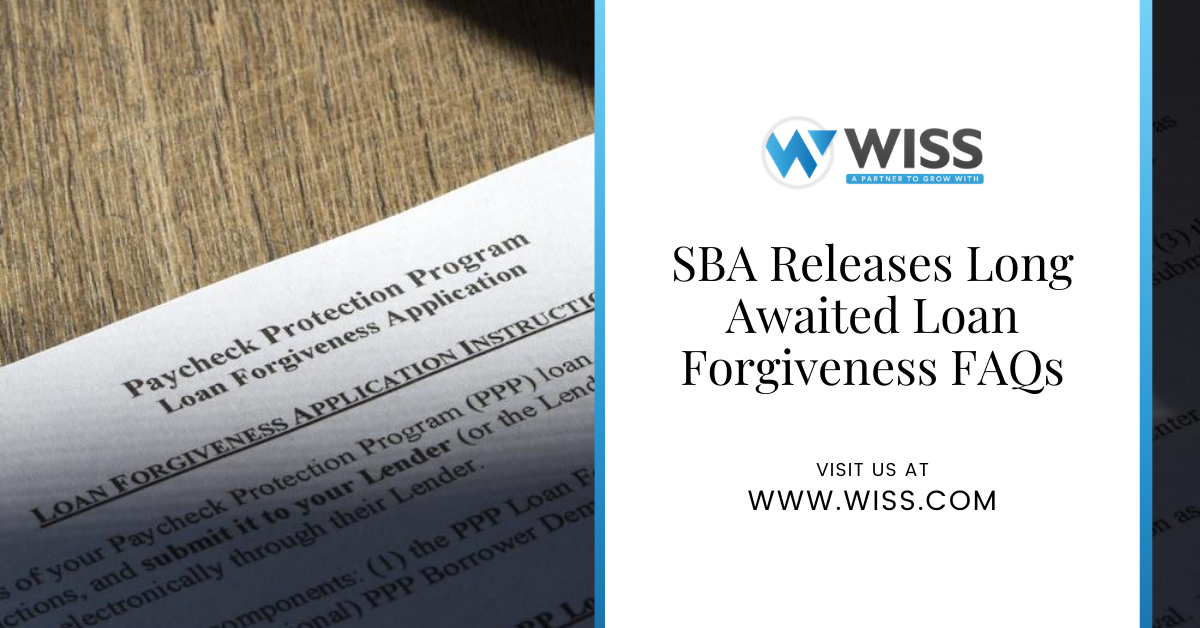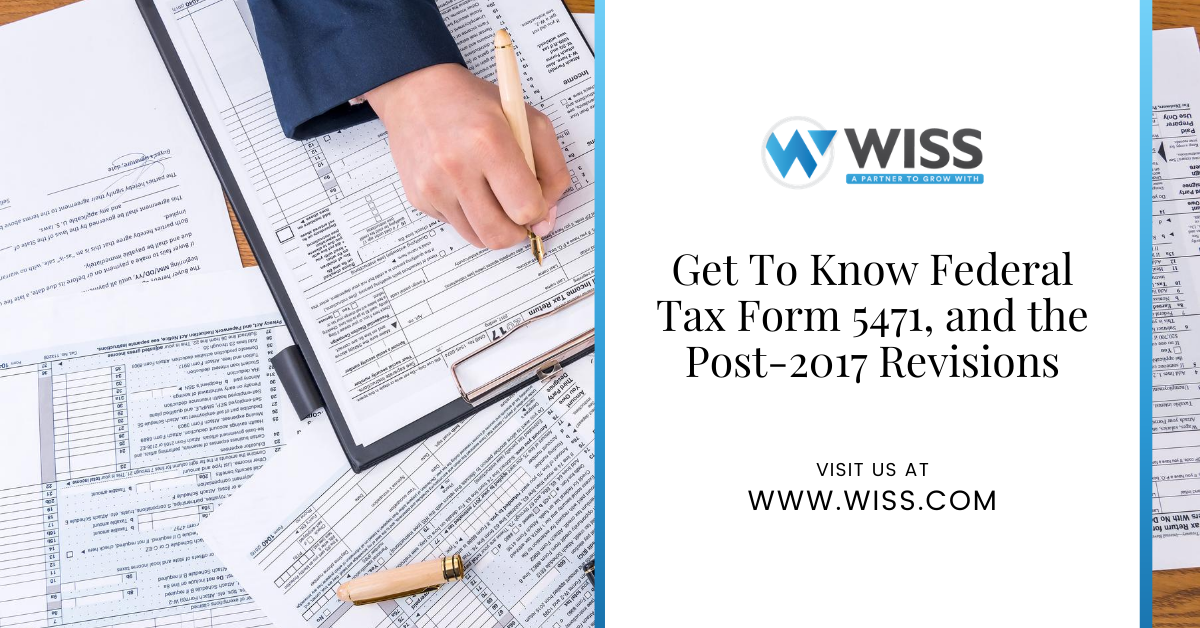At long last, the Small Business Administration (SBA) and the Department of the Treasury have released guidance addressing Paycheck Protection Program (PPP) loan forgiveness. This guidance can be relied upon as the SBA’s interpretation of Section 1106 of the Coronavirus, Aid, Relief, and Economic Security Act (CARES Act), as amended by the Paycheck Protection Program Flexibility Act (Flexibility Act).
Consistent with previous updates, the SBA has decided to provide a series of questions and answers via FAQ, which can be relied upon as official guidance by both lenders and borrowers. There have been a number of updates to the program; to put this into perspective, there were 49 FAQs issued covering the loan application, 22 Interim Final Rules (IFRs) and 10 pages of guidance from the newly released set of FAQs covering loan forgiveness
The set of FAQs is divided into four functional areas:
- General Forgiveness FAQs
- Loan Forgiveness Payroll Costs FAQs
- Loan Forgiveness Nonpayroll Costs FAQs
- Loan Forgiveness Reductions FAQs
There were both welcome and unwelcome updates included in the updates.
General Loan Forgiveness FAQs
This section of the guidance includes 3 FAQs covering the loan application, type of documents that can be submitted to the lender processing the forgiveness application, in addition to the repayment schedule.
When it comes to the forgiveness application, this update suggests sole proprietors, independent contractors, and self-employed individuals with no employees at the time of loan application and did not include any employee compensation in the average monthly payroll at the time of loan application, should use the short form for loan forgiveness (Loan Forgiveness Application Form 3508EZ https://home.treasury.gov/system/files/136/PPP-Forgiveness-Application-3508EZ.pdf). The SBA has also confirmed lenders are able to use scanned copies of documents, electronic signatures, and electronic consent when evaluating the loan forgiveness application and supporting documentation. The final FAQ confirms borrowers are not required to make any payments for the outstanding loan while the forgiveness application is evaluated by the lender and the SBA.
Loan Forgiveness Payroll Costs FAQs
There were a few surprises contained in this section of 8 updates. Some updates confirm existing SBA guidance covering forgivable payroll costs, but we will focus on new guidance. In a win for small businesses, the SBA has confirmed payroll costs incurred prior to the covered period, but paid during the covered period, will be considered eligible payroll costs and can be included in forgivable expenses. The SBA does not define how far back in arrears the payroll period may apply to, but they do indicate by way of example that the payroll cycle incurred immediately prior to the start of the covered period and paid during the covered period will be eligible for loan forgiveness.
Guidance confirms borrowers with a bi-weekly or more frequent pay cycle should consider using the alternative payroll covered period (APCP) to calculate eligible payroll costs. By using the APCP these borrowers will not have to calculate payroll for partial periods. Borrowers with a semi-monthly or less frequent pay cycle will be required to calculate partial pay periods. FAQ #3 provides a detailed example borrowers should reference when determining partial pay periods.
SBA has confirmed borrowers should use gross payroll when calculating eligible payroll costs. Eligible salaries and wages include all forms of cash compensation such as tips, commissions, bonuses or other forms of incentive pay. The ceiling for forgivable cash compensation remains limited to $100,000 on an annualized basis.
The SBA has now confirmed that group health care benefits do not include health care benefits paid by employees either pre-tax or after tax, such as the employee share of their health care premium. Borrowers cannot include expenses for group health benefits accelerated from a period outside the Covered Period or Alternative Payroll Covered Period.
Eligible retirement benefits include only those payments made directly by the employer and the business owner is not able to accelerate these payments.
Probably the most significant impact and update from this set of FAQs covers the amount of owner compensation eligible for loan forgiveness. Guidance varies depending on entity type. Regardless of entity type, the amount of loan forgiveness permitted for owner-employees and self-employed individuals payroll is limited to $20,833 per individual if the borrower elects the 24-week covered period, and $15,385 per individual if the borrower elects the 8-week covered period, and the PPP loan was approved prior to June 5th 2020. The limit for owner-employee compensation applies across all entities in which the individual has an ownership interest. The SBA will allow the owner-employee to choose where they allocate their payroll costs. Refer to the table at the end of this blog for a detailed breakdown of eligible owner-employee compensation by entity type.
Loan Forgiveness Nonpayroll Costs FAQs
This section includes 7 FAQs and covers some general updates we have previously received.
The SBA has confirmed nonpayroll costs incurred prior to the covered period, but paid during the covered period, will be considered eligible payroll costs and can be included in forgivable expenses. The SBA does not define how far back in arrears the nonpayroll period may apply to, but the SBA does indicate by way of example that the payroll cycle incurred immediately prior to the start of the covered period and paid during the covered period will be eligible for loan forgiveness
The SBA has confirmed nonpayroll costs are eligible for loan forgiveness if they were incurred during the Covered Period and paid on or before the next regular billing date, even if the billing date is after the Covered Period.
The SBA has included a reminder that the Alternative Payroll Covered Period is only applicable to payroll costs, and that borrowers are required to use the Covered Period when determining eligible nonpayroll costs.
Interest expense is considered an eligible nonpayroll cost, however, only payments of interest on real or personal property (such as an auto loan) are eligible for loan forgiveness. Interest related to unsecured credit is not eligible for loan forgiveness, although the payment of interest with PPP funds is an eligible use of the loan proceeds.
Payments towards recently renewed leases or interest payments related to refinanced mortgages are eligible for loan forgiveness as long as the obligation existed prior to February 15, 2020.
The SBA has clarified that eligible transportation refers to transportation utility fees assessed by state and local governments; payments of these fees are eligible for loan forgiveness. The SBA does not provide any guidance regarding other transportation fees such as gas or repairs and maintenance, and we can assume these expenses are not eligible for loan forgiveness.
Loan Forgiveness Reductions FAQs
This final section includes 4 FAQs and explains how borrowers will calculate the penalty provisions and reductions to loan forgiveness, if the borrower reduced employee salaries or hourly wages, or reduced headcount.
FAQ 1 confirms that a borrower will not experience a reduction in loan forgiveness due to a reduction in FTE employees during the Covered Period if the borrower offered to rehire the employee and that employee declined the offer of reemployment. Borrowers are required to notify the state unemployment insurance office within 30 days of the employee’s rejection of the offer. Documentation to support compliance with the good faith offer to rehire include: written offer to rehire an individual, written record of the offer’s rejection by the employee, and a written record of efforts to hire a similarly qualified individual if the borrower was unable to hire similarly qualified individuals. Keep in mind, borrowers have until December 31, 2020 to rehire, and any business that experienced headcount reductions or salary and wage reductions should consider waiting to file their forgiveness application until January 2021 in order to take advantage of the December 31, 2020 safe harbors, if possible.
If the borrower reduced the salary or hourly wage of a covered employee by more than 25% during the Covered Period of the Alternative Payroll Covered Period, then the borrower may experience a reduction in loan forgiveness, unless the borrower meets the qualifications and satisfies the Salary/Hourly Wage Reduction Safe Harbor. Only the portion in excess of the 25% reduction in salary or hourly wage reduces the amount of loan forgiveness. Again, the borrower has until December 31, 2020 to cure any reduction in loan forgiveness caused by a reduction in salary or wage by restoring that reduction. There is a 3 step process to calculate the amount of forgiveness reduction; SBA FAQs provide detailed examples as well as Wiss’ step by step video guidance on filling in and completing the forgiveness application.
When calculating the loan forgiveness reduction for salary/hourly wage reductions in excess of 25%, borrowers should only take into account decreases in salaries or wages, and not total payroll cost per employee.
The FAQ’s have addressed a number of questions, but there are some grey areas that will require further clarification from the SBA and Treasury Department. We should expect some additional guidance from the SBA, especially the topic of calculating FTE reductions if a borrower applies for loan forgiveness before the end of the Covered Period. There is also an effort at the legislative level to approve and pass PPP 2.0, as there is approximately $130 billion remaining to be funded and the loan application window closes August 8th. We will continue to provide updated guidance as updates are released by the government.
[table id=18 /]

 Previous
Previous






